Service Alert
July 1 - Canada Day
CELA will be closed on Tuesday, July 1st for Canada Day. Our office will reopen and our Contact Centre services will resume on Wednesday, July 2nd. Enjoy your holiday!
CELA will be closed on Tuesday, July 1st for Canada Day. Our office will reopen and our Contact Centre services will resume on Wednesday, July 2nd. Enjoy your holiday!
Showing 1 - 20 of 139619 items
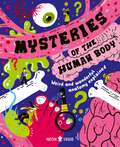
By Neon Squid, Dr Azmain Chowdhury. 2025
A human body book with a twist—discover the science behind the weird and unusual stuff our bodies can do from…
Dr. Azmain Chowdhury, with illustrations from Daniel Nelson.You know your heart is always beating, your intestines digest your food, and even that your brain is still awake when you’re asleep—that’s no mystery. But why do we get "brain freeze" if we eat ice cream too quickly? And why on earth do we get butterflies in our stomach when we’re nervous? And is it true we can squirt milk from our eyes?!This book focuses on the bizarre things all of our bodies do—including things we don’t understand (looking at you, appendix). Dr. Azmain also asks the burning medical questions we’ve all been wondering about:Why does cilantro taste like soap to some people?How long can we stay awake for?Can our hearts actually break after a romantic break-up? (Asking for a friend).Filled with gross, surprising, and downright terrifying facts, it’s bloated with cool science to impress your friends.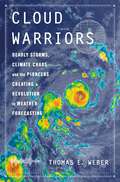
The unprecedented inside story of the people pushing boundaries of science and technology to build better weather forecasts—providing life-saving warnings…
and crucial intelligence about nature’s deadliest threatsKiller tornadoes. Catastrophic hurricanes. Lethal heat waves. Across the United States and around the world, extreme weather events bring an unending torrent of death and destruction. One indispensable tool consistently offers the ability to help reduce the impact of these calamities: the weather forecast. For centuries, humans have sought to foretell nature’s next moves, from ancient farmers to trailblazers of the Space Age, who brought computers and satellites to bear on the problem. Now a new wave of advances, including artificial intelligence and data-gathering drones, makes it possible to accurately detect these fearsome events further in advance. They provide critical time to prepare and get people out of harm’s way—an undertaking made ever more urgent by the effects of climate change.In a remarkable tale of innovation and perseverance, veteran journalist Thomas E. Weber takes readers into the world of the pioneers creating these game-changing forecasts. From storm chasers racing to hunt twisters and physicists unraveling the secrets of the atmosphere, from scientists studying how people react to warnings to humanitarian groups rushing to avert famines, Weber goes behind the scenes to show how predictions keep getting better. He explains what’s needed to turn these forecasts into actions that prevent tragedies and how anyone can become more weather literate to protect themselves in emergencies. Cloud Warriors will change the way you think about treacherous weather—and the power of being able to see it coming.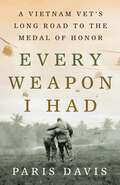
By Paris Davis. 2025
The story of a Green Beret commander's heroism during the Vietnam War, and the long fight to recognize his bravery.When…
Col. Paris Davis was selected to lead one of the Green Beret A-teams organizing resistance to Communist incursions into South Vietnam, his commanding officer warned him that some of his soldiers would resent his authority. This was no surprise; there were only a handful of Black officers in the Special Forces. Davis quickly won the respect of his soldiers, and would soon fight beside him as bullets snapped past and mortars exploded overhead.On June 18th, Davis led a group of inexperienced locals and Special Forces soldiers in an attack on a Viet Cong base in Bong Son. They were met by a superior enemy force, and Davis led the charge in a grueling firefight. He was seriously wounded, but he disobeyed a direct order to retreat until he dragged three injured Green Berets off the battlefield to safety.Every Weapon I Had is an inspiring tale of valor and sacrifice, set against the backdrop of major escalations in both the Vietnam War and the Civil Rights movement. It is also a story of deferred honor and delayed recognition; Davis earned the Silver Star and Purple Heart for his actions, but his nomination for the Congressional Medal of Honor was repeatedly “lost.” No official reason has ever been given for this oversight, but those who fought to correct it believe that it was motivated by racial prejudice. Davis was finally awarded the Medal in 2023, 58 years after the battle.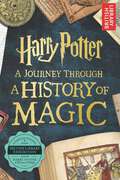
By British British Library. 2017
Harry Potter: A History of Magic is the official companion eBook to the special exhibition Harry Potter: A History of Magic…
that ran at the British Library in 2017 and New-York Historical Society in 2018. Explore the extraordinary subjects of the Hogwarts curriculum - Potions & Alchemy, Divination, Care of Magical Creatures, and more - and examine incredible historical artifacts, items from J.K. Rowling's personal archive, and stunning original artwork from Harry Potter series artists Mary GrandPré, Jim Kay, and Brian Selznick. This complete catalogue of the over 150 artifacts on display gives readers an up-close look at magical treasures from all over the world, and their inspiration on J.K. Rowling's magical inventions. Readers will be able to pore over ancient spell books, explore amazing illuminated scrolls that reveal the secret of the Elixir of Life, and through its unique design and functionality examine vials of dragon's blood, mandrake roots, painted centaurs and a genuine witch's broomstick. This special publication is an essential volume for all Harry Potter fans, history buffs, bibliophiles, and is a fascinating exploration of the history of the magic at the heart of the Harry Potter stories.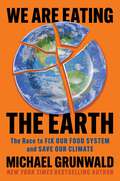
By Michael Grunwald. 2025
From the author of New York Times bestseller The New New Deal, a groundbreaking piece of reportage from the trenches…
of the next climate war: the fight to fix our food system.Humanity has cleared a land mass the size of Asia plus Europe to grow food, and our food system generates a third of our carbon emissions. By 2050, we&’re going to need a lot more calories to fill nearly 10 billion bellies, but we can&’t feed the world without frying it if we keep tearing down an acre of rainforest every six seconds. We are eating the earth, and the greatest challenge facing our species will be to slow our relentless expansion of farmland into nature. Even if we quit fossil fuels, we&’ll keep hurtling towards climate chaos if we don&’t solve our food and land problems. In this rollicking, shocking narrative, Grunwald shows how the world, after decades of ignoring the climate problem at the center of our plates, has pivoted to making it worse, embracing solutions that sound sustainable but could make it even harder to grow more food with less land. But he also tells the stories of the dynamic scientists and entrepreneurs pursuing real solutions, from a jungle-tough miracle crop called pongamia to genetically-edited cattle embryos, from Impossible Whoppers to a non-polluting pesticide that uses the technology behind the COVID vaccines to constipate beetles to death. It&’s an often infuriating saga of lobbyists, politicians, and even the scientific establishment making terrible choices for humanity, but it&’s also a hopeful account of the people figuring out what needs to be done—and trying to do it. Michael Grunwald, bestselling author of The Swamp and The New New Deal, builds his narrative around a brilliant, relentless, unforgettable food and land expert named Tim Searchinger. He chronicles Searchinger&’s uphill battles against bad science and bad politics, both driven by the overwhelming influence of agricultural interests. And he illuminates a path that could save our planetary home for ourselves and future generations—through better policy, technology, and behavior, as well as a new land ethic recognizing that every acre matters.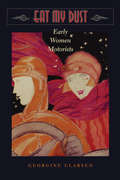
The history of the automobile would be incomplete without considering the influence of the car on the lives and careers…
of women in the earliest decades of the twentieth century. Illuminating the relationship between women and cars with case studies from across the globe, Eat My Dust challenges the received wisdom that men embraced automobile technology more naturally than did women.Georgine Clarsen highlights the personal stories of women from the United States, Britain, Australia, and colonial Africa from the early days of motoring until 1930. She notes the different ways in which these women embraced automobile technology in their national and cultural context. As mechanics and taxi drivers—like Australian Alice Anderson and Brit Sheila O'Neil—and long-distance adventurers and political activists—like South Africans Margaret Belcher and Ellen Budgell and American suffragist Sara Bard Field—women sought to define the technology in their own terms and according to their own needs. They challenged traditional notions of femininity through their love of cars and proved they were articulate, confident, and mechanically savvy motorists in their own right.More than new chapters in automobile history, these stories locate women motorists within twentieth-century debates about class, gender, sexuality, race, and nation.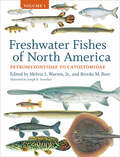
By Joseph R. Tomelleri. 2014
A monumental reference that provides comprehensive details on the freshwater fishes of the United States, Canada, and Mexico.CHOICE Outstanding Academic…
TitleCertain to stand among the reference books of choice for anyone interested in the continent’s aquatic ecosystems, Freshwater Fishes of North America covers the ecology, morphology, reproduction, distribution, behavior, taxonomy, conservation, and fossil record of each North American fish family. Volume 1 (of three) covers the following North American families of fishes:Petromyzontidae (Lampreys)Dasyatidae (Whiptail Stingrays)Acipenseridae (Sturgeons)Polyodontidae (Paddlefishes)Lepisosteidae (Gars)Amiidae (Bowfins)Hiodontidae (Mooneyes)Anguillidae (Freshwater Eels)Engraulidae (Anchovies)Cyprinidae (Carps and Minnows)Catostomidae (Suckers)The encyclopedic review of each fish family is accompanied by color photographs, maps, and original artwork created by noted fish illustrator Joseph R. Tomelleri. The result is a rich textual and visual experience. Widely anticipated, this monumental reference is the result of decades of analysis and synthesis by leading fish experts from a variety of universities, research laboratories, museums, and aquariums.The chapter authors of Volume 1 are:William E. BemisMicah G. BennettMichael D. BurnsBrooks M. BurrAnthony L. EchelleNicholas J. GidmarkCarter R. GilbertHoward S. GillLance GrandeAlex HaroPhillip M. HarrisEric J. HiltonLisa J. HopmanGregory HubbardBernard R. KuhajdaWilliam J. MatthewsDeborah A. McLennanIan C. PotterClaude B. RenaudStephen T. RossMichael SandelAndrew M. SimonsMelvin L. Warren, Jr.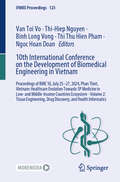
By Thi-Hiep Nguyen, Van Toi Vo, Binh Long Vong, Thi Thu Hien Pham, Ngoc Hoan Doan. 2025
This book presents cutting-edge research and developments in the field of biomedical engineering, with a special emphasis on results achieved…
in Vietnam and neighboring low- and middle-income countries. Gathering the second volume of the proceedings of the 10th International Conference on The Development of Biomedical Engineering in Vietnam, BME 10, held on July 25-27, 2024, in Phan Thiet, Vietnam, it describes advances in molecular and cellular biology techniques, neuroengineering techniques, and statistical and computational methods, for different biomedical applications, such as drug delivery, medical diagnosis and monitoring. A special emphasis is given to advances promoting Healthcare Evolution towards 5P Medicine in Low- and Middle-Income Countries Ecosystem. All in all, this book offers important answers to current challenges in the field and a source of inspiration for scientists, engineers, and researchers with various backgrounds working in different research institutes, companies, and countries.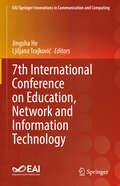
By Jingsha He, Ljiljana Trajković. 2025
This book presents the proceedings of the 7th International Conference on Education, Network and Information Technology (ICENIT2024), which took place…
in Dalian, China, on August 16-18, 2024. The conference provides a platform for relevant scholars and researchers to discuss the impact of network and information technology on education, improve the research and application level of domestic education, and promote academic exchanges in related fields as well. Topics include web classroom applications, technology-enhanced learning, computer distance education, AI in education, digital libraries information system applications, and more. The conference is relevant to researchers, professionals, practitioners, and students in education, and IT. Presents the proceedings of the 7th International Conference on Education, Network and Information Technology (ICENIT2024) Provides a platform to discuss the impact of network and information technology on education Relevant to researchers, professionals, practitioners, and students in education, and IT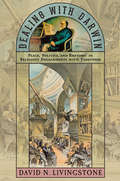
How was Darwin’s work discussed and debated among the same religious denomination in different locations?Using place, politics, and rhetoric as…
analytical tools, historical geographer David N. Livingstone investigates how religious communities sharing a Scots Presbyterian heritage engaged with Darwin and Darwinism at the turn of the twentieth century. His findings, presented as the prestigious Gifford Lectures, transform our understandings of the relationship between science and religion.The particulars of place—whether in Edinburgh, Belfast, Toronto, Princeton, or Columbia, South Carolina—shaped the response to Darwin’s theories. Were they tolerated, repudiated, or welcomed? Livingstone shows how Darwin was read in different ways, with meaning distilled from Darwin's texts depending on readers' own histories—their literary genealogies and cultural preoccupations. That the theory of evolution fared differently in different places, Livingstone writes, is "exactly what Darwin might have predicted. As the theory diffused, it diverged." Dealing with Darwin shows the profound extent to which theological debates about evolution were rooted in such matters as anxieties over control of education, the politics of race relations, the nature of local scientific traditions, and challenges to traditional cultural identity. In some settings, conciliation with the new theory, even endorsement, was possible—demonstrating that attending to the specific nature of individual communities subverts an inclination to assume a single relationship between science and religion in general, evolution and Christianity in particular. Livingstone concludes with contemporary examples to remind us that what scientists can say and what others can hear in different venues differ today just as much as they did in the past.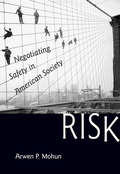
By Arwen P. Mohun. 2013
How have Americans confronted, managed, and even enjoyed the risks of daily life?Winner of the Ralph Gomory Prize of the…
Business History Conference“Risk” is a capacious term used to describe the uncertainties that arise from physical, financial, political, and social activities. Practically everything we do carries some level of risk—threats to our bodies, property, and animals. How do we determine when the risk is too high? In considering this question, Arwen P. Mohun offers a thought-provoking study of danger and how people have managed it from pre-industrial and industrial America up until today. Mohun outlines a vernacular risk culture in early America, one based on ordinary experience and common sense. The rise of factories and machinery eventually led to shocking accidents, which, she explains, risk-management experts and the “gospel of safety” sought to counter. Finally, she examines the simultaneous blossoming of risk-taking as fun and the aggressive regulations that follow from the consumer-products-safety movement. Risk and society, a rapidly growing area of historical research, interests sociologists, psychologists, and other social scientists. Americans have learned to tame risk in both the workplace and the home. Yet many of us still like amusement park rides that scare the devil out of us; they dare us to take risks.
By Hyun Michel Koo, Nicholas S. Jakubovics, Bastiaan P. Krom. 2025
This book presents state-of-the-art information on the fundamentals of oral biofilm formation. The reader learns about adhesion and early colonization…
of polymicrobial communities, the biochemistry and function of the oral biofilm matrix, cooperative interactions, as well as antagonism among microbes within oral biofilms. The past decade has brought major technological advancements in molecular and microscopy technologies changing our understanding of oral biofilms in health and disease. International experts comprehensively describe key strategies and techniques for studying oral biofilms in vitro, ex vivo and in vivo, including imaging, model systems and omics approaches. In addition, the book provides an up-to-date overview of oral biofilms and associated diseases. Innovative antibiofilm strategies are also addressed. These span from eradication or modulation of oral biofilms as a prevention strategy, and nonantibiotic or antibiotic-supplementing approaches such as quorum sensing inhibition, nanoparticles and pre-and probiotics. The book is a useful introduction to the field for early career scientists interested in basic and translational research on oral biofilms. It is also an interesting read for advanced scientists and clinicians working in dentistry and oral health research, as it gives them a broader view of the topic beyond their area of specialization.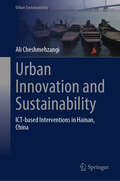
By Ali Cheshmehzangi. 2025
This book is a collection of context-specific ICT-based interventions to achieve sustainability from various perspectives or dimensions. The book is…
based on case study examples in the strategic context of Hainan, South China. Five ICT-based pilot studies were conducted, surveyed, and analysed in 2021 and 2022. The studies explore impacts on four main sustainability dimensions of environmental, social, economic, and institutional. Several ICT-based interventions are suggested to enhance environmental protection, promote health and support in elderly communities, augment social media for place promotion, create online opportunities for local markets, and help boost local tourism industries. Urban Innovation and Sustainability is an attempt to highlight the positive side of ICT-based interventions in cities and communities. We also need to note the negative side of ICTs, which are partly covered in the case study examples. However, this book focuses on case study pilot examples to promote the nexus between innovation and sustainability. It is essential to explore opportunities that could later be scaled up, transform practices, and help develop context-specific policies. In essence, paradigm shifts, infrastructural development, and human-centric development are necessary. This book&’s findings interest scholars/researchers, practitioners, and authorities in various disciplines of urbanism, urban/human geography, urban studies, planning, innovation, and sustainability.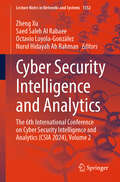
By Zheng Xu, Octavio Loyola-González, Nurul Hidayah Ab Rahman, Saed Saleh Al Rabaee. 2025
This book delves into the latest advancements and innovations in big data analytics as applied to cyber-physical systems within smart…
city frameworks. Key themes include the integration of IoT, AI, and machine learning for enhanced urban management, sustainable development, and improved quality of life. The book showcases cutting-edge research, practical case studies, and expert insights, making it an invaluable resource for understanding the transformative potential of big data in creating smarter, more connected cities. Don't miss out on this authoritative guide to the future of smart city analytics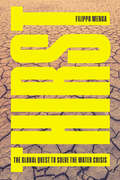
By Filippo Menga. 2025
A groundbreaking account of the worsening global water crisis corporations and non-profits have failed to addressTwo billion people worldwide are…
without access to safe water. But solutions are hard to come by when causes are not clearly defined. In a whirlwind tour of global water insecurity, one of the world&’s leading experts on water politics chronicles the massive impact of climate change; insatiable water demands from industry and agriculture; and widespread lack of state investment in infrastructure. Menga focuses in particular on high priests of global developmentalism – celebrities, CEOs, and sustainability directors – who have emerged as some of the loudest voices about water issues while offering few tangible solutions. Thirst shows that if humanity is to escape the deadlock that bedevils access to clean water, it has to reconsider both its faith in the market and its relationship with nature.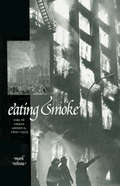
By Mark Tebeau. 2004
During the period of America's swiftest industrialization and urban growth, fire struck fear in the hearts of city dwellers as…
did no other calamity. Before the Civil War, sweeping blazes destroyed more than $200 million in property in the nation's largest cities. Between 1871 and 1906, conflagrations left Chicago, Boston, Baltimore, and San Francisco in ruins. Into the twentieth century, this dynamic hazard intensified as cities grew taller and more populous, confounding those who battled it. Firefighters' death-defying feats captured the popular imagination but too often failed to provide more than symbolic protection. Hundreds of fire insurance companies went bankrupt because they could not adequately deal with the effects of even smaller blazes.Firefighters and fire insurers created a physical and cultural infrastructure whose legacy—in the form of heroic firefighters, insurance policies, building standards, and fire hydrants—lives on in the urban built environment. In Eating Smoke, Mark Tebeau shows how the changing practices of firefighters and fire insurers shaped the built landscape of American cities, the growth of municipal institutions, and the experience of urban life. Drawing on a wealth of fire department and insurance company archives, he contrasts the invention of a heroic culture of firefighters with the rational organizational strategies by fire underwriters. Recognizing the complexity of shifting urban environments and constantly experimenting with tools and tactics, firefighters fought fire ever more aggressively—"eating smoke" when they ventured deep into burning buildings or when they scaled ladders to perform harrowing rescues. In sharp contrast to the manly valor of firefighters, insurers argued that the risk was quantifiable, measurable, and predictable. Underwriters managed hazard with statistics, maps, and trade associations, and they eventually agitated for building codes and other reforms, which cities throughout the nation implemented in the twentieth century. Although they remained icons of heroism, firefighters' cultural and institutional authority slowly diminished. Americans had begun to imagine fire risk as an economic abstraction.By comparing the simple skills employed by firefighters—climbing ladders and manipulating hoses—with the mundane technologies—maps and accounting charts—of insurers, the author demonstrates that the daily routines of both groups were instrumental in making intense urban and industrial expansion a less precarious endeavor.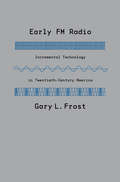
By Gary L. Frost. 2010
The commonly accepted history of FM radio is one of the twentieth century’s iconic sagas of invention, heroism, and tragedy.…
Edwin Howard Armstrong created a system of wideband frequency-modulation radio in 1933. The Radio Corporation of America (RCA), convinced that Armstrong’s system threatened its AM empire, failed to develop the new technology and refused to pay Armstrong royalties. Armstrong sued the company at great personal cost. He died despondent, exhausted, and broke. But this account, according to Gary L. Frost, ignores the contributions of scores of other individuals who were involved in the decades-long struggle to realize the potential of FM radio. The first scholar to fully examine recently uncovered evidence from the Armstrong v. RCA lawsuit, Frost offers a thorough revision of the FM story. Frost’s balanced, contextualized approach provides a much-needed corrective to previous accounts. Navigating deftly through the details of a complicated story, he examines the motivations and interactions of the three communities most intimately involved in the development of the technology—Progressive-era amateur radio operators, RCA and Westinghouse engineers, and early FM broadcasters. In the process, Frost demonstrates the tension between competition and collaboration that goes hand in hand with the emergence and refinement of new technologies. Frost's study reconsiders both the social construction of FM radio and the process of technological evolution. Historians of technology, communication, and media will welcome this important reexamination of the canonic story of early FM radio.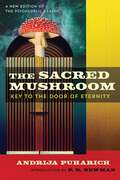
By Andrija Puharich. 2025
• Shares the author&’s research on extrasensory perception (ESP) and the psychic effects of hallucinogenic mushrooms• Describes ancient Egyptian spiritual…
practices centered on Amanita muscaria (fly agaric) mushrooms• Details the author&’s research work with R. Gordon Wasson and his experiments with Aldous Huxley and famed psychic Peter HurkosIn 1954, neurologist Andrija Puharich, M.D., receives a call from a wealthy supporter of his lab about an unusual subject worthy of further research: Harry Stone, a young sculptor with unusually acute extrasensory perception. When handed an ancient Egyptian artifact, Harry had fallen into a deep trance, drawing hieroglyphic symbols, including mushrooms, and using ancient Egyptian phrases to describe a drug that can enhance psychic abilities.Intrigued, Dr. Puharich studies Harry&’s trance-induced statements and discovers that they are clearly describing ancient spiritual practices involving Amanita muscaria (fly agaric) mushrooms. He begins direct investigations with Harry at his lab in Maine, learning more about the use and preparation of the sacred mushroom as well as about astral travel and past lives. Dr. Puharich shares his research with ethnomycologist R. Gordon Wasson, who is about to travel to Mexico on a CIA-funded research trip, and the two researchers agree to test telepathic communications between the lab in Maine and a Mexican curandero. The results of the psychic experiment lead Puharich to discover Amanita muscaria growing in the wild near his research facility.Now with a supply of the sacred mushroom, Dr. Puharich begins to study its psychic and visionary potential and the veracity of Harry Stone&’s channeled Egyptian statements. He studies the effects of Amanita muscaria not only on Harry, but also on famed psychic Peter Hurkos and other visitors to his lab, including Aldous Huxley. This book reveals all the details of that story in this new edition of the psychedelic classic. It also includes an in-depth introduction by psychedelic historian P. D. Newman.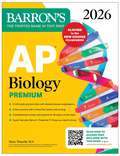
By Mary Wuerth, Barron'S Educational Series. 2025
Be prepared for exam day with Barron&’s. Trusted content from AP experts!Barron&’s AP Biology Premium, 2026 includes in‑depth content review…
and practice ALIGNED TO THE NEW COURSE FRAMEWORK. It&’s the only book you&’ll need to be prepared for exam day. Written by Experienced Educators Learn from Barron&’s‑‑all content is written and reviewed by AP experts Build your understanding with comprehensive review tailored to the most recent exam Get a leg up with tips, strategies, and study advice for exam day‑‑it&’s like having a trusted tutor by your side Be Confident on Exam Day Sharpen your test‑taking skills with 6 full‑length practice tests‑‑2 in the book and 4 more online–plus detailed answer explanations for all questions Strengthen your knowledge with in‑depth review covering all units on the AP Biology exam Reinforce your learning with multiple‑choice and short and long free‑response practice questions in each chapter that mirror the format of actual exam questions and are accompanied by clear answers and explanations Expand your understanding with a review of the major statistical tests and lab experiments that will enhance your scientific thinking skills Robust Online Practice Continue your practice with 4 full‑length practice tests on Barron&’s Online Learning Hub Simulate the exam experience with a timed test option Deepen your understanding with detailed answer explanations and expert advice Gain confidence with scoring to check your learning progress Power up your study sessions with Barron's AP Biology on Kahoot!‑‑additional, free practice to help you ace your exam! Publisher's Note: Products purchased from 3rd party sellers are not guaranteed by the publisher for quality, authenticity, or access to any online entities included with the product.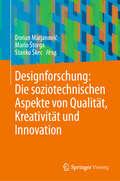
By Mario Štorga, Dorian Marjanović, Stanko Škec. 2025
Das Buch bietet einen ganzheitlichen Einblick in die Designforschung, eine umfassende und zusammenhängende Vision des neuesten Wissens über die Schaffung…
und Verbesserung hochwertiger Produkte, Kreativität und Innovation. Die Beiträge in diesem Band dienen als erhellender Kompass für das Verständnis der Ingenieurdesignforschung und bieten eine umfassende Perspektive auf Produktentwicklung, Kreativität, Innovation, Erfindung und Produktivität, indem sie die historische Entwicklung der Designwissenschaft aufzeigen und die Grenzen der Ingenieurdesignforschung erkunden. Die vorgestellten Bildungsprojekte wurden an EU-Universitäten durchgeführt und bieten Einblicke für zukünftige Designkurse. Zentral in den Diskussionen ist die entscheidende Rolle der soziotechnischen Dimensionen im Ingenieurdesign, wobei Fragen der Kreativität, Qualität, menschzentrierter Methoden und der Anforderungen neuer Technologien erörtert werden, die ihre entscheidende Rolle für den Erfolg des Ingenieurdesigns betonen. Der Text bietet einen panoramischen Überblick über den aktuellen Stand der Designforschung und kritische Themen und liefert eine umfassende Übersicht für junge Forscher. Pädagogen und Mentoren werden ihr Wissen vertiefen, während Experten ihre Methoden und Werkzeuge verfeinern.